- Yokohama-shi Top Page
- Municipal Government Information
- Public Relations, Public Information, News
- Public Relations and Publications
- Public Relations Printed Materials
- Public information Yokohama
- Public information Yokohama-shi version
- Discover Yokohama Aya
- May 2023 issue The world's best planetarium completed in Yokohama!
Here's the text.
May 2023 issue The world's best planetarium completed in Yokohama!
Yokohama with sea, port, greenery, history, region, people and various attractions. We will deliver the color of this city as "Yokohama Aya Discovery". This time, it is from the Hamagin Children's Space Science Museum (Yokodai, Isogo-ku).
Last Updated June 1, 2023
Please see the link for the contents of the "Public Information Yokohama" May 2023 issue "Yokohama Aya Discovery".
The world's best planetarium completed in Yokohama!
Commentator at the Planetarium at Hamagin Children's Space Science Museum Kazu
This year, 2023 is the 100th anniversary of the invention of the world's first modern planetarium in Germany.
The first planetarium, invented in 1923 by an engineer at Karl Zeiss in Germany, recreated about 4,500 stars and five planets seen from Germany, and received applause from all over the world. A few years later, it has a function to reproduce the starry sky from around the world, and has evolved into a Zeiss II type that can project about 9,000 stars, further enhancing its reputation.
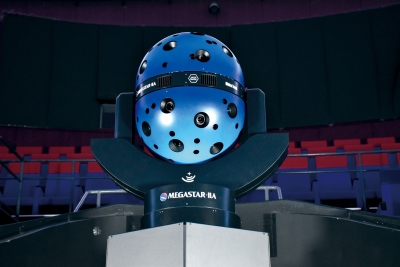
MEGASTAR-IIA, which achieved world record
In December 2022, the Hamagin Children's Space Science Museum (Yokohama Children's Science Museum) in Yokodai, Isogo Ward was renewed to the latest planetarium for the first time in 21 years.
100 years before the planetarium was invented, it was full of effort to reproduce the visible stars. However, with astronomical telescopes, you can see that there are more stars in the sky.
If you reproduce even the stars that seemed invisible, the planetarium may be able to experience a more realistic starry sky.
Takayuki Ohira, the representative director of Ohira Giken Co., Ltd., the world's smallest planetarium manufacturer in Tsuzuki-ku, Yokohama, thought so. In 1998, we developed MEGASTAR, which reflects 1.5 million stars, more than 100 times the level of the previous planetarium, and attracted worldwide attention as a "new generation planetarium."
What if you want to make the latest planetarium?
In this way, the latest planetarium projector MEGASTAR-IIA, with 1.2 billion stars, was created based on the latest observation data observed by the space telescope under the Gaia project of the European Space Agency. In the planetarium projector, there is a part with a hole in the star called the original star, and the light of the ultra-high-luminance LED passes through the original stellar, becomes the star's light, and is projected on the dome screen by the lens. The original stellar version of MEGASTAR-IIA is a special product named GIGAMASK and was completed by the joint development of Ohira Giken and Sonny Music Solutions Co., Ltd.
Its precision is as small as 180 nanometers, with the size of the hole representing the darkest star being less than 1 / 5,000th of a millimeter, and the gap between stars is about 1 / 1000th of a millimeter. There is only It is made with ultra-precision machining technology that processes thin metal films with lasers. MEGASTAR-IIA combines 32 pieces of GIGAMASK to reproduce the latest universe on earth.
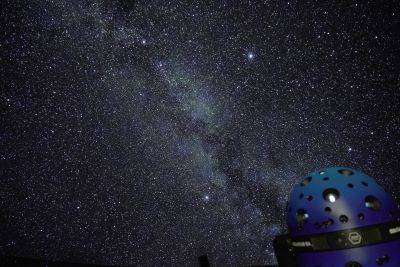
MEGASTAR-IIA and Summer Starry Sky
The appearance of the universe reproduced using the latest technology is still "awesome". Our visible starry sky from the earth is recreated forever realistically. When you observe the starry sky using binoculars and telescopes in the planetarium, you can see a dark star like a real starry sky, and you can see the existence of nebulas and clusters. If you take a picture in the planetarium, you will see the stars firmly up to dark stars that cannot be seen by the telescope.
The latest planetarium reproduces the starry sky of nature that has been lost with the development of science and technology in large cities like Yokohama. At the same time, it reproduces the latest appearance of the universe that can be observed with the development of science and technology on the ground and lets you experience it.
I know it's amazing, but do you need that technology for the planetarium? It's invisible, but isn't it meaningless if you can't see it? I guess there are many people who feel this way.
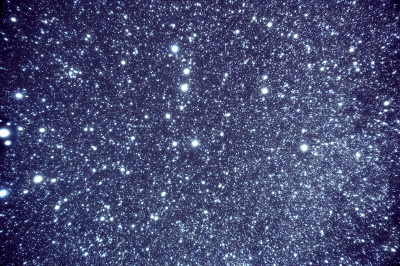
Projected Ogumaza, Ursa Minor
As a matter of fact, even from the eyes of the commentator who projects the planetarium in MEGASTAR-IIA every day, I can't say that all of the stars projected by MEGASTAR-IIA are visible. However, as televisions have evolved from CRTs to flat-screen TVs, and the resolution has increased to full HD, 4K, and 8K, the amount of information and resolution of the world around us continues to increase with the evolution of technology.
If they were present and future children who have come into contact with a high-resolution world since their birth. You may be able to feel the appearance of the universe that adults today cannot feel. I think it will feel the universe more beautiful and closer. I also have such expectations.
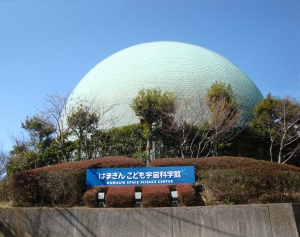
Appearance of Planetarium Dome
"Maybe the MEGASTAR-IIA in Yokohama is the best in the world?"
In November 2022, the Science Museum decided to challenge the Guinness World Record of the number of stars that can be projected in the planetarium. However, it is not easy to challenge the world record. Based on the detailed images taken at the planetarium, astronomers conducted various verifications, and the final result was obtained three months later in February 2023.
At least 700 million stars can be projected by MEGASTAR-IIA, which can be measured with the technology of the Science Museum. A new record that is five times more than the previous record, achieving the Guinness World Record!
The planetarium of the Hamagin Children's Space Science Museum, completed in Yokohama, is the world's best planetarium where you can see the world's most stars. (As of May 2023)
"All adults and children. Why don't you come to experience the world's best starry sky?"
※Official notation of Guinness World Records
The most stars projected by a planetarium projector (one off) is at least 700,000,000 stars and was achieved by Yokohama Science Center in Yokohama, Kanagawa, Japan verified on 8 February 2023.
[Japanese translation]
The largest number of stars projected on the planetarium projector (one-off) was achieved at least 700 million stars at the Yokohama Children's Science Museum in Yokohama City, Kanagawa Prefecture, and was verified on February 8, 2023.
[Reception end] Reader present
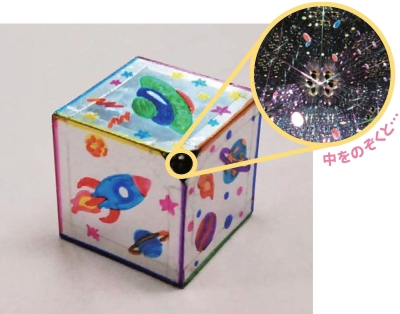
The application has been closed, and prizes have been sent to the winners on Thursday, June 1st. Thank you very much for your application.
Thank you for always seeing "Public Information Yokohama" and "Yokohama Aya Discovery". Five people will receive a work kit starry sky mangekyo, which is being sold well at the Hamagin Children's Space Science Museum online shop, by lottery from those who received their impressions. If you wish, please refer to the following six items. ※Please specify and apply by postcard (to Yokohama City Hall Policy Bureau Public Relations Section, 6-50-10 Honcho, Naka-ku, Yokohama 231-0005) or e-mail (sss-saihakken@city.yokohama.jp). The deadline must arrive on Wednesday, May 31, 2023.
※ 1.Postal code, 2. Address, 3. Name, 4. Impression, 5. I would like to read, 6. "May issue present hope"
The winner's announcement will be returned by sending the prize. In addition, the personal information you receive will not be used for any purpose other than sending prizes.
Contact Yokohama City Hall Policy Bureau Public Relations Section TEL: 045‐671-2331 FAX: 045‐661-2351
Inquiries to this page
Hamagin Children's Space Science Museum
Telephone: 045-832-1166
Telephone: 045-832-1166
Fax: 045-832-1161
Page ID: 714-937-566







